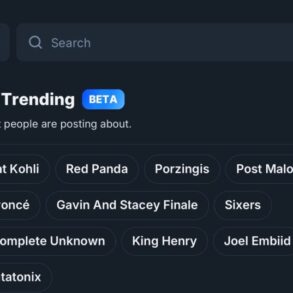
Most people have heard the famous phrase “the enemy of my enemy is my friend.”
Now, Northwestern University researchers have used statistical physics to confirm the theory that underlies this famous axiom.
The study was published today (May 3) in the journal Science Advances.
In the 1940s, Austrian psychologist Fritz Heider introduced social balance theory, which explains how humans innately strive to find harmony in their social circles. According to the theory, four rules — an enemy of an enemy is a friend, a friend of a friend is a friend, a friend of an enemy is an enemy and, finally, an enemy of a friend is an enemy — lead to balanced relationships.
Although countless studies have tried to confirm this theory using network science and mathematics, their efforts have fallen short, as networks deviate from perfectly balanced relationships. Hence, the real question is whether social networks are more balanced than expected according to an adequate network model. Most network models were too simplified to fully capture the complexities within human relationships that affect social balance, yielding inconsistent results on whether deviations observed from the network model expectations are in line with the theory of social balance.
The Northwestern team, however, successfully integrated the two key pieces that make Heider’s social framework work. In real life, not everyone knows each other, and some people are more positive than others. Researchers have long known that each factor influences social ties, but existing models could only account for one factor at a time. By simultaneously incorporating both constraints, the researchers’ resulting network model finally confirmed the famous theory some 80 years after Heider first proposed it.
The useful new framework could help researchers better understand social dynamics, including political polarization and international relations, as well as any system that comprises a mixture of positive and negative interactions, such as neural networks or drug combinations.
“We have always thought this social intuition works, but we didn’t know why it worked,” said Northwestern’s István Kovács, the study’s senior author. “All we needed was to figure out the math. If you look through the literature, there are many studies on the theory, but there’s no agreement among them. For decades, we kept getting it wrong. The reason is because real life is complicated. We realized that we needed to take into account both constraints simultaneously: who knows whom and that some people are just friendlier than others.”
“We can finally conclude that social networks align with expectations that were formed 80 years ago,” added Bingjie Hao, the study’s first author. “Our findings also have broad applications for future use. Our mathematics allows us to incorporate constraints on the connections and the preference of different entities in the system. That will be useful for modeling other systems beyond social networks.”
Kovács is an assistant professor of Physics and Astronomy at Northwestern’s Weinberg College of Arts and Sciences. Hao is a postdoctoral researcher in his laboratory.
What is social balance theory?
Using groups of three people, Heider’s social balance theory maintains the assumption that humans strive for comfortable, harmonious relationships. In balanced relationships, all people like each other. Or, if one person dislikes two people, those two are friends. Imbalanced relationships exist when all three people dislike each other, or one person likes two people who dislike each other, leading to anxiety and tension. Studying such frustrated systems led to the 2021 Nobel Prize in physics to Italian theoretical physicist Giorgio Parisi, who shared the prize with climate modelers Syukuro Manabe and Klaus Hasselmann.
“It seems very aligned with social intuition,” Kovács said. “You can see how this would lead to extreme polarization, which we do see today in terms of political polarization. If everyone you like also dislikes all the people you don’t like, then that results in two parties that hate each other.”








